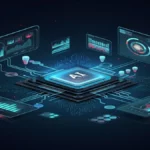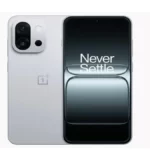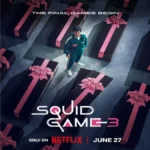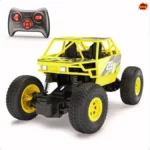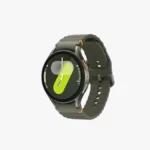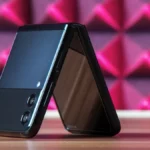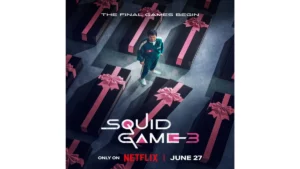NFTs were created long before they became popular in the mainstream. Reportedly, the first NFT sold was “Quantum,” designed and tokenized by Kevin McKoy in 2014 on one blockchain (Namecoin), then minted and sold in 2021 on Ethereum. NFTs are built following the ERC-721 (Ethereum Request for Comment #721) standard, which dictates how ownership is transferred, methods for confirming transactions, and how applications handle safe transfers (among other requirements). The ERC-1155 standard, approved six months after ERC-721, improves upon ERC-721 by batching multiple non-fungible tokens into a single contract, reducing transaction costs.
What Is a Non-Fungible Token (NFT)?
Non-fungible tokens (NFTs) are assets that have been tokenised via a block chain. They are assigned unique identification codes and metadata that distinguish them from other tokens. NFTs can be traded and exchanged for money, cryptocurrencies, or other NFTs—it all depends on the value the market and owners have placed on them. For instance, you could use an exchange to create a token for an image of a banana. Some people might pay millions for the NFT, while others might think it worthless. Cryptocurrencies are tokens as well; however, the key difference is that two cryptocurrencies from the same blockchain are interchangeable—they are fungible. Two NFTs from the same blockchain can look identical, but they are not interchangeable.
- NFTs (non-fungible tokens) are unique cryptographic tokens that exist on a blockchain and cannot be replicated.
- NFTs can represent digital or real-world items like artwork and real estate.
- “Tokenizing” these real-world tangible assets makes buying, selling, and trading them more efficient while reducing the probability of fraud.
- NFTs can represent individuals’ identities, property rights, and more.
- Collectors and investors initially sought NFTs after the public became more aware of them, but their popularity has since waned.
How do NFTs work?
Non-fungible tokens or NTFs are cryptographic assets which sit on a blockchain – that is, a distributed public ledger that records transactions. Each NFT contains unique identification codes that distinguish them from each other. This data makes it easy to transfer tokens between owners and to verify ownership. NFTs hold a value which is set by the market – i.e., supply and demand – and they can be bought and sold in the same way that physical assets can. NFTs are digital representations of assets – and can also represent real-world items such as artwork and real estate. Tokenising real-world tangible assets in this way is considered by some users to make buying, selling and trading them more efficient, as well as potentially reducing the likelihood of fraud.
How do you buy NFTs?
The NFT market is considered high risk, and its volatile highs and lows can deter even experienced investors. If you are thinking of buying NFTs, it’s important to have a clear understanding of the process. Let’s look at the steps involved:
Open a crypto exchange account. The first step is to open an account on a crypto platform or crypto exchange. A crypto exchange is an online platform where you can buy and sell different types of cryptocurrencies. To buy NFTs, you need to create an account with your chosen platform. Different platforms offer different services, so it’s worth researching them to find out which suits you best in terms of features, fees, and ongoing support.
Open a crypto wallet
A crypto wallet stores the keys that grant access to your digital assets. Users are given a unique seed phrase – also called a recovery phrase – to access their wallet. It’s essential to keep your seed phrase safe – without it, you lose access to your wallet. Wallets can either be hosted on an exchange or may operate independently. If they operate independently, then you retain responsibility for your wallet and private keys. If your digital wallet is hosted by an exchange, the exchange acts as an intermediary for crypto transfer. The company holds your private keys and is responsible for keeping your assets safe. Alternatively, if you want to buy and sell nft nyc without third-party involvement, you need a wallet tied directly to the blockchain. Transfer Ethereum into a crypto wallet
Once you have selected an coinbase nft exchange and bought ETH, you then need to transfer it to a wallet. This process will vary depending on the exchange through which you buy ETH, the wallet you use, and the marketplace on which you plan to trade NFTs.
Buy nft meme. Once your wallet is connected and funded, you can start buying NFTs. When you buy an invisible friends nft, you gain ownership in the sense that it becomes your property. However, the NFT holder doesn’t have other rights to the work – such as the right to adapt or reproduce it – unless that is part of the direct agreement between the buyer and creator. Different marketplaces may place varying restrictions on the NFT you purchased.
How do you pronounce NFT?
Almost everyone spells it out, saying “en eff tee.” The brave call them “nefts.” The enlightened have never had the word cross their lips.
What’s worth picking up at the NFT supermarket?
NFTs can really be anything digital (such as drawings, music, your brain downloaded and turned into an AI), but a lot of the current excitement is around using the tech to sell digital art.
You mean, like, people buying my good tweets?
I don’t think anyone can stop you, but that’s not really what I meant. A lot of the conversation is about NFTs as an evolution of fine art collecting, only with digital art.
But yes, someone could buy your good tweets. The founder of Twitter sold one for just under $3 million shortly after we originally posted this article.
Could you do a real quick rundown of what the blockchain is?
Well, they’re pretty complex, but the basic idea is that blockchains are a way to store data without having to trust any one company or entity to keep things secure and accurate. There are definitely nuances and exceptions there, which you can read about in our blockchain explainer, but when most people say “blockchain,” that’s the kind of tech they’re talking about. There’s also… a lot of nuance about whether NFT’s are on the blockchain or not, which we’ll dig into in a bit.
What is the most expensive nft ?
Time after time there is media hype happening around yet another seemingly worthless NFT sold for an insanely high price. But not many people really get the idea of NFTs, so I decided to write a short explanation of this peculiar phenomenon. Also, I thought it would be quite interesting to rank the top 5 most expensive NFTs ever sold. So, what is NFT? The abbreviation states for “non-fungible token” which means that all tokens of this kind are unique. And that’s it. With the help of NFT tokens, the developers solved the problem of ensuring the ownership of digital objects. With NFT the owner of some digital object can be sure that this object will stay unchanged and secured forever. Currently, the main field of application of such tokens is the gaming industry where gamers purchase unique weapons and other digital assets to improve the gaming experience. Madonna dropped a non-fungible token collaboration with NFT artist Beeple on SuperRare last week that garnered descriptors such as “bizarre” and “spicy” due to its graphic content. The three-part series of NFT videos titled “Mother of Creation” explores the concept of birth, creation and motherhood.
how to make nft art ?
If you want to create your own NFTs, the Binance nft monkey art Marketplace is a great place to start. You can quickly mint NFTs and create your own collections directly on BNB Chain (former BSC) and Ethereum (ETH). BNB Chain offers low fees, quick transaction times, and has a growing NFT community. There are many platforms to choose from, but usually, you just need to fill in your NFT details, upload your digital art or file, and pay the minting fee. If you feel like selling your NFT, you can quickly put it on a number of NFT marketplaces too. NFT stocks refer to shares of any listed company that is actively pursuing NFT-related goals, whether it is by creating an NFT marketplace, their own collection or an NFT-enabled product.




